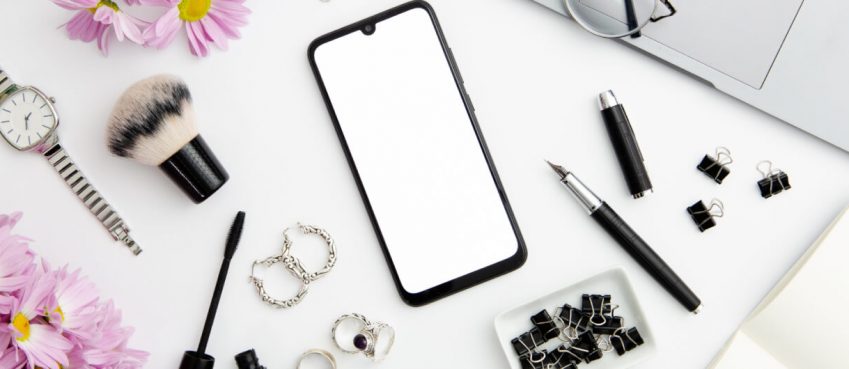
Indeed, mirrorless cameras are magical devices that offer you handsome ways to capture moments with true and amazing image quality.
To keep its charm for a long time and don’t want to get wericked images, it is important to take care of your mirrorless camera properly.
So, what is required to take care of a mirrorless camera?
Well, in the first place, cleaning your gears could be a good start.
However, there are many ways to take care of your mirrorless camera in the right way.
And, in this blog, I have just shared seven best mirrorless camera caring tips.
So, do check all the tips mentioned in this article.
Also read: How To Use Mirrorless Camera
7 Tips To Sustain The Charm Of Your Mirrorless Camera
The mentioned tips were tested and worked well on my camera. So, I have decided to put them here for you to take advantage.
1. Clean your camera sensor professionally
Camera sensor is an important part than any and it should be cleaned properly and professionally over time.
Getting dust on your camera sensor is genuine and cleaning it is also required to keep the functioning of the sensor up to its mark.
You can use a rocket blower to gently force air into the sensor area. You can also use sensor swabs. Both methods are good and don’t affect the camera sensor.
In addition to this, if you shoot often or take it outside, you should clean your sensor at least 2-4 times a year.
2. Keep your lenses and filters clean
Besides sensors, it is also important to clean your lenses and filters. It is because when shooting (either indoor or outdoor) lenses and filters accumulate small amounts of dust particles.
When this gets in consistency for longer, could result in getting bad picture quality.
Ensure to clean your lenses and filters once you’re done with shooting. It would be good if you do it immediately after shooting.
Instead of using hands, use cotton or any cotton cloth or nylon cloth to clean dust from lenses and filters, as it is a friendly method.
3. Use a Filter to Protect Your Lens
Another way to take care of your mirrorless camera is using protective filters on your lens. Might you have got one when you purchased a camera or lens kit.
While shooting, use a filter to protect your lens. There are various lens filters that assist shooting with good quality though.
In addition, they will also provide protection from accidental drops, if it happens, the filter will take the brunt of the impact rather than the lens itself.
And when you are done shooting, cap your lens with a protective filter and place it in your lens kit.
4. Carry spare lens cap and body cap
Carrying extra spare lens cap and body cap is beneficial as it minimises the risk of having to leave your camera or lens exposed.
It also provided peace of mind satisfaction in case you lost the cap, allowing you to fill the gap with your extra carrying habit.
5. Keep your lenses in a protective bag
Protective bags offer an extra layer of security to your camera gear and lens kits. When travelling, protective bags become essentially important.
Rather mis-arrange things, keep all your equipment in your protective bag and zip it properly. Buy a protective bag for camera that offers enough space to keep things without splashing other things.
6. Remove the battery when not in use
Another important way to take care of your mirrorless cameras is by removing the battery from your camera when not in use.
Make sure the removed battery is not placed in the open, instead kept in a bag or pouch.
7. Store your gears in a low-humidity area
Temperature can also impact your camera and lens. Store your gears including your camera in a low-humid atmosphere or place.
Avoid keeping in a place where heat is too much.
Consider your dress-keeping doors or coffee table as a storing area. Those are some good places to keep.
Do’s & Don’ts Of Camera Maintenance
Certainly! Here are some important do’s and don’ts of camera maintenance to help keep your camera equipment in good working condition:
Do’s:
Keep it clean: Regularly wipe down your camera body and lenses with a microfiber cloth to remove dust, smudges, and fingerprints. Use a blower brush or air blower to remove loose dirt and debris from crevices.
Use a lens cap and camera cap: When not in use, always put the lens cap on your lenses and the camera cap on your camera body to protect them from dust and scratches.
Store it properly: When not in use, store your camera and lenses in a camera bag or case to protect them from environmental factors like humidity, extreme temperatures, and potential impacts.
Use a UV or protective filter: Consider using a UV or clear protective filter on your lenses to prevent damage from scratches, dust, and minor impacts. This can also make cleaning easier.
Protect against moisture: If you’re shooting in wet conditions, use rain covers and moisture-absorbing packs to prevent water damage. After shooting in the rain, wipe down your equipment and let it dry thoroughly before storing it.
Don’ts:
Don’t touch the lens: Avoid touching the glass elements of your lens directly. If you need to clean the lens, use a lens cleaning kit designed for the purpose.
Don’t expose it to extreme temperatures: Avoid leaving your camera in extremely hot or cold environments for extended periods as this can damage internal components and affect battery performance.
Don’t change lenses in dusty or windy conditions: Dust and debris can enter the camera body when changing lenses, potentially causing damage to the sensor. Do it in a clean, sheltered area.
Don’t force buttons or controls: Be gentle when operating buttons, dials, and switches on your camera. Forcing them can lead to damage or malfunction.
Don’t neglect lens caps: Always use lens caps when not shooting. Neglecting this can lead to scratches on the front element of your lens.
Bonus: Best Mirrorless Cameras
Sony A7 IV

Sensor: Exmor R back-illuminated CMOS sensor
Sensor size: Full-frame
Megapixels: 33 MP
Lens mount: Sony E
LCD screen: Vari-angle touchscreen, 1.03m dots
Max continuous shooting speed: 6fps
Max video resolution: 4K 60p
Read full specification here
Read full review on Sony A7 IV
Fujifilm GFX100

Sensor: Large format CMOS sensor
Sensor size: Larger than full-frame
Megapixels: 102 MP
Lens mount: FUJIFILM G mount
LCD screen: Tilt-type, 2.36m dots
Max continuous shooting speed: 5fps
Max video resolution: 8K 24p
Read full specification here
Read full review on Sony A7 IV
Panasonic LUMIX S5

Sensor: Dual Native ISO technology CMOS
Sensor size: Full frame
Megapixels: 24.2 MP
Lens mount: L mount
LCD screen: Free angle, 1.84m dots
Max continuous shooting speed: 7fps
Max video resolution: 4K 30p/60p
Read full specification here
Read full review on Sony A7 IV
What’s Next
The next step is that you should consider these tips on taking care of your mirrorless camera for better results.
Avoid touching your lenses or cleaning it directly with your hands. Consider cleaning your camera lenses using camera cleaning tools or cotton cloth.
Top 10 News
-
01
10 Top-Rated AI Hugging Video Generator (Turn Images Into Ki...
Monday December 23, 2024
-
02
10 Top-Rated Face Swap AI Tools (Swap Photo & Video Ins...
Friday December 20, 2024
-
03
10 Exciting iPhone 16 Features You Can Try Right Now
Tuesday November 19, 2024
-
04
10 Best Anatomy Apps For Physiologist Beginners
Tuesday November 12, 2024
-
05
Top 10 Websites And Apps Like Thumbtack
Tuesday November 5, 2024
-
06
Top 10 Sites Like Omegle That Offer Random Video Chat
Monday October 21, 2024
-
07
Entrepreneurial Ideas To Make 5K In A Month (10 Realistic Wa...
Monday October 7, 2024
-
08
[10 Best] Cash Advance Apps Like Moneylion And Dave (No Cred...
Friday September 20, 2024
-
09
Top 10 Richest Person In The World
Tuesday August 27, 2024
-
10
Top 10 Unicorn Startups In The World (2024-25)
Monday August 26, 2024







